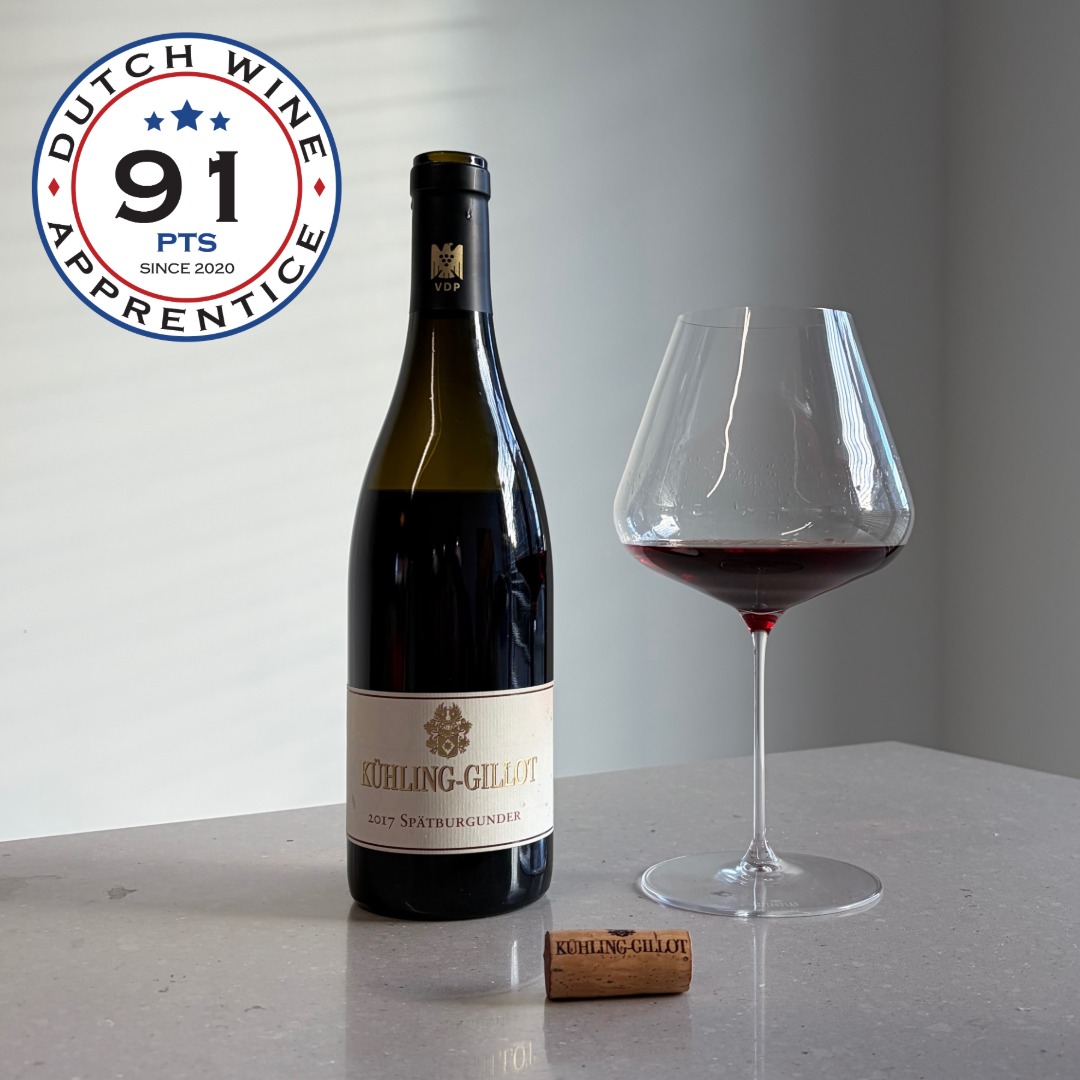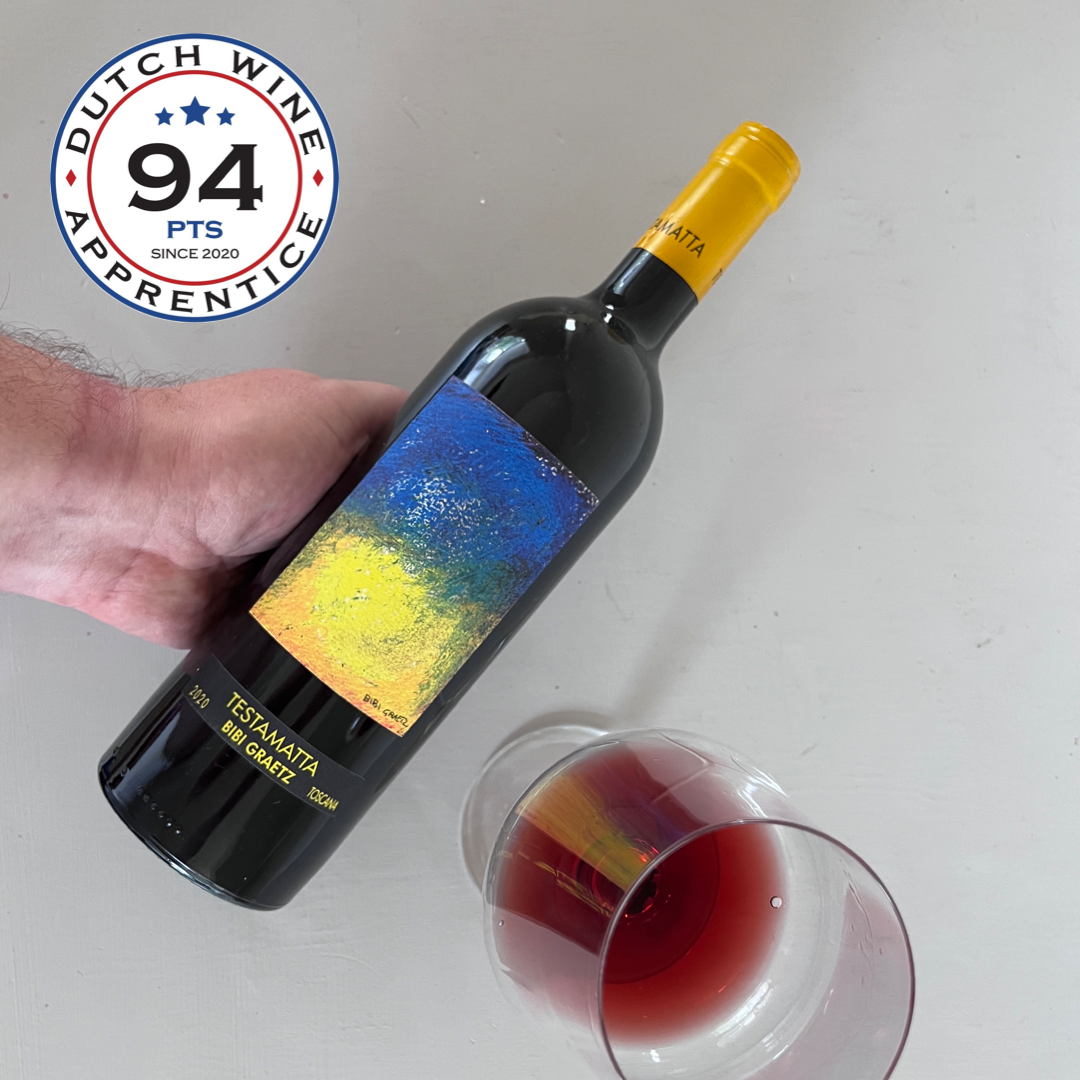

In the world of top-class wineries, Bibi Graetz in a way is a ‘new kid on the block’. In only two decades Graetz build up a winery of world stature. His trademarks are his Sangiovese based wines Testamatta and Colore. In this review we discuss the Testamatta 2020 as part of our project “Tuscany, a Journey through Five Lenses”.
Born and raised in a family of artists, Bibi Graetz became an artist himself. At first in the proprietary sense of the word by studying art at the Accademia della Bella Arti in Florence. Graetz however fell in love with wine and started to practice another form of art: the art of winemaking. He decided to take on the family estate in Vincigliata. Recently Bibi Graetz purchased the historical Villa Aurora in the small village of Fiesole. Overlooking the city of Florence, this is where his cult wines Testamatta and Colore are made.
Although mainly located in the larger Chianti region Bibi chooses to label his wines under the much wider classification of Tuscany (IGT or IGP). Therefore, we do not place Bibi Graetz under the Chianti sub-zone. More about this later.
Testamatta 2020 consist entirely of Sangiovese. As a crossing of Ciliegiolo and Calabrese di Montenuovo, Sangiovese does contain a high amount of acids and tannins. Typical primary aromas are cherry, amarena, plum and violet. Due to its high acids and tannins, Sangiovese does have a great aging potential. Secondary and tertiary aromas like leather, brushwood and tobacco will appear with time.
The Sangiovese grapes for the Testamatta 2020 are coming from six vineyards throughout Tuscany. The grapes are sourced from vineyards from the hillsides of Florence to the heart of the Chianti Classico area. The vineyards are located in Vincigliata / Fiesole (north of Florence), Montefili (south of Florence), Londa (east of Rufina), Lamole (Chianti Classico area) and Siena.
Testamatta contains both grapes from old and new vines, with a focus on old vines. It is said Bibi Graetz owns the biggest collection of old vines in Tuscany. The root system of old vines is well developed a finely branched, making the vines less sensitive to stress. Old vines do have less yield, leading into grapes with an increased natural concentration. As mentioned before, possession of old vines in Tuscany is quite unique. Due to the fact the research on quality clones of Sangiovese is quite young, most of the quality vines in Tuscany are comparatively young.
The observant readers amongst us noticed we only mentioned five vineyards. That is correct and needs an explanation. Previous vintages were made from grapes out of five vineyards. Since the 2020 vintage, some adjustments have been made. Most of the before mentioned vineyards qualify as high-altitude vineyards in the Tuscan sense of the word, with altitudes ranging between 250 meters a.s.l. (Vincigliata) and 650 meters a.s.l. (Lamole). In addition to that, some of the vineyards do have a northern exposition. These conditions contribute to a fresh a delicate style.
2020 was a warm vintage, however temperatures are expected to keep rising. Anticipatory to climate change and in order to retain elegancy, grapes from a new vineyard in Olmo (north of Florence) are introduced in the 2020 vintage. 30 to 35 percent of the fruit for the 2020 vintage is coming from this windy high elevation vineyard (420 meters a.s.l.), bringing even more freshness and finesse.
The grapes for Testamatta are cultivated organically. To achieve optimum ripening in all of the grapes, the grapes for the Testamatta 2022 are harvested in various round, in this case up to eight times, from the 24th of September to the 15th of October.
In terms of winemaking, the approach of Bibi Graetz could be compared to painting. Were as painters do use primary colours to create the desired colour, Graetz uses his vineyards as primary colours to create his desired wine. Every hectare is divided into parcels and every parcel is vinified separately. After destemming and soft pressing, fermentation is started by natural indigenous yeasts.
The smaller plots are fermented in open top barriques (225l) and the larger parcels in 50hl cask or stainless-steel tanks. Graetz’ winemaking techniques are aiming towards high extraction, with six manual punch-downs and pump-overs per day. After fermentation the wine stays 7 to 10 more days on the skins. The small parcels ripen in old barriques and the larger parcels in 50hl casks, both for 20 months. Once all of the plots are fermented and matured, artist Bibi Graetz completes his masterpiece by blending the plots to the artwork he has in mind.
Due to the differentiated plots throughout the northern and central part of Tuscany, Testamatta is classified as Toscana Rosso Indicatizione Geografica Tipica (IGT). In fact, Testamatta is a Super Tuscan entirely made out of Sangiovese. All of the labels are designed by Bibi Graetz, reflecting his artistic origin. The name ‘Testamatta’ refers to a creative person with an out of the box personality.
The transparent ruby red wine with light orange rims gives multifaceted aromas. Most striking are the simultaneously fresh and rich flowery aromas of blossom, violets, lavender and wild roses. In terms of fruit cherry is prevalent, varying from wild red cherry to ripe black cherry. The cherry fruit is complemented by delicate layers of wild raspberry and wild strawberry. The fruit tends to be mainly fresh and vibrant, but there is also a pleasant ripeness in it. A subtle green edge that reminds of zest, orange peel and tomato leaf give a thrilling contrast to the ripeness of the fruit. At this youthful stage of the wine, wood influences come to the fore. The wine has a light smoky cedarwood like touch and does give pronounced herbaceous aromas like pepper, clove, lemon thyme, rosemary twig, cypress and black tea. There also is savory tinge of dry-cured ham and balsamic vinegar and an earthiness that reminds of sun warmed Tuscany soils.
In our opinion with Testamatta 2020 Bibi Graetz succeeded to capture an extraordinary clean and feminine representation of Sangiovese. The wine does give a pure and tense expression of Sangiovese, without any aggression or sharp edges. The wine is dominated by a delicate fruit and a striking succulence. Although the fruit is polished and comfortable, it also is fresh, crunchy and precise. The fully fledged medium bodied wine is calm and tender. The energic acids do give the wine great finesse and elegance and makes you feel the wine is floating, leaving a lean and clean mouthfeel. Under the comfortable shell of juicy fruit an almost invisible but decisive fine chalky core carries the wine. The feminine texture gives the wine grip and well-dosed power and the bright immersive long-lasting aftertaste leaves a salty savory impression of balsamic vinegar, roasted tomatoes and dried Italian herbs.
Conclusion
Both the label and the wine remind of Tuscan summer nights. Testamatta 2022 does give a pure and true expression of Sangiovese that could be compared to the feeling of living on the edge of day and night in a cozy Tuscan town. One feels the comfortable warmth of the day stored in the cobbled Tuscan streets, combined with the exciting freshness of the incoming bright starry night. Those colliding powers do give an unbeatable energy. The whole spectacle however takes place in serene silence. Only the observant will notice.
We reward the Bibi Graetz – Testamatta 2020 with an excellent 94 DWA score.
This review is part of our project “Tuscany, a Journey through Five Lenses”. In this project we travel through one of the most exciting parts of Italy and show its different faces interpreted through leading wineries. We do this through wine reviews, background articles and interviews.
The regions we discuss are Tuscany IGP, Chianti, Bolgheri, Montepulciano and Montalcino. Bibi Graetz is our guide through the larger Tuscany IGP region.
To stay updated about this special project subscribe to our newsletter, by clicking here. More information about the project can be found here.
Other wines by Bibi Graetz in this project:
This wine is reviewed by our own Hermen Jansen. The wines of Bibi Graetz are imported in the Netherlands through Poot Agenturen, and available through selected partners.
Price: €75
Taste date: July 2023
Score: 94/100 DWA Score
Website: Bibi Graetz
Join our insiders’ list and get exclusive early access to new articles, expert tips, and fresh reviews delivered straight to your inbox. Subscribe now and be the first to discover!
Subscribe for curated content, podcast alerts and honest wine reviews.